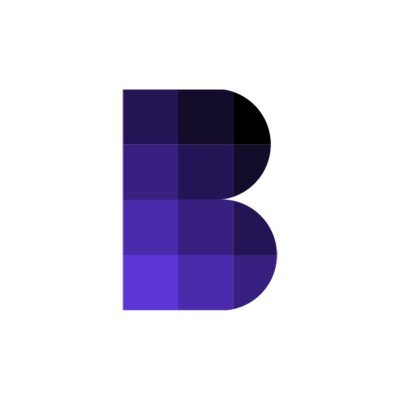This is a guest post by PwC Germany.
In the rapidly evolving landscape of financial markets, tokenization is emerging as a pivotal innovation. With industry leaders gravitating toward tokenized forms of value, players across the sector are recognizing an array of benefits. These include the potential to unlock market liquidity, streamline post-trade processing, foster automation, and enhance transparency. This surge in interest is underscored by a striking statistic: 97% of institutional investors¹ believe that tokenization is poised to revolutionize asset management.
However, this promising horizon is not without its challenges, such as the fragmentation of regulatory frameworks related to tokenized assets, which vary significantly across different regions. Adding to this complexity is the lack of interoperability between various blockchain networks, which currently host different types of tokenized assets represented in various formats. This requires more upfront investment for new entrants, and limits liquidity in each network. Liability and recourse in cross-chain transfers require greater clarity. In decentralized blockchain networks, which are often open-source technologies, attributing liability becomes challenging. This complexity is amplified in scenarios involving cross-chain token bridge solutions, where the roles and liabilities of smart contract owners remain ambiguous.
Chainlink’s Cross-Chain Interoperability Protocol (CCIP) presents a novel solution to many challenges associated with tokenization in financial markets. It offers a more transparent and traceable framework for asset transfers, thereby potentially simplifying compliance with regulatory requirements from a diverse set of regulators. If there is a need to investigate a transaction, perhaps for compliance checks or to resolve a dispute, CCIP’s framework could be used to track the transaction’s entire journey across chains. This capability is significant in addressing potential regulatory requirements, as it provides a reliable method to ascertain the history and legitimacy of tokenized assets, which is often a requirement under various regulatory frameworks.
Moreover, CCIP’s ability to connect various blockchains through existing infrastructures allows financial institutions to leverage their current systems to interact with different blockchain networks securely. This aligns with the legal requirement of monitoring and managing tokenized assets effectively.
CCIP’s unique approach also helps meet institutional requirements around maintaining necessary roles and regulatory compliance. Financial institutions need to ensure that the recording and management of assets on the blockchain are in compliance with regulatory standards.
Institutional Requirements Around Policies and Controls
- Monitoring and Integrity of Asset Quantities to ensure that it matches the issued quantity of securities. This is crucial to prevent unauthorized creation or deletion of assets.
- Segregation of Assets and Management of Participation of different entities must be managed by the Designated Depository. This includes both institutional and knowledgeable non-institutional investors.
- Prevention of Settlement Fails and Finality are to be ensured to guarantee the trading system’s stability and reliability. Finality should be established in near-real-time within the day, or at most by the second business day post-trade.
- Transaction Confirmation should be a clear and accurate confirmation of transaction details.
- Settlement in Central Bank Money or Commercial Bank Money is preferred.
- Compliance with Regulatory Standards, including compliance with existing financial regulations, as well as any new regulations specific to DLT-based securities trading and settlement.
- Effective Risk Management must be in place, including managing technological risks, cybersecurity threats, and operational risks.
- High levels of Transparency and Reporting to regulatory authorities to ensure compliance and facilitate oversight.
Features and Use Cases of Chainlink CCIP for Financial Institutions
Efficient Integration Across Multiple Chains: A significant challenge for capital markets and financial institutions is the integration with a rising number of blockchain networks. Manual integration is not only time-consuming but also costly, often requiring specialized access to blockchain developers. The collaboration between Swift and Chainlink addressed this by enabling efficient integration with various blockchains, reducing the need for manual, individual integrations.
Streamlined Transaction Processes and Liquidity Aggregation: CCIP allows financial institutions to connect to the blockchain ecosystem through a single integration point, which speeds up development and market entry significantly. It also facilitates liquidity flows between various trading environments and provides shared access to users for applications and products across different markets. Ultimately, CCIP as a universal cross-chain standard simplifies the transaction process, making it more efficient and cost-effective.
Interoperability Between Public and Private Chains: The ability of financial institutions to trigger transactions on both public and private chains, without the need for direct integration with those chains, is a significant advancement. This functionality of CCIP enables users of different blockchain networks to interact seamlessly with each other, enhancing the scope of financial transactions across diverse blockchain environments.
Enhanced Functionality with Smart Contracts: CCIP allows Programmable Token Transfers, which are the sending of messages and tokens with instructions attached. These instructions can dictate actions on the destination chain, such as executing specific smart contract functions on arrival. This feature adds a layer of functionality, allowing for more complicated and tailored financial transactions.
Robust Risk Management and Security: Policies and parameters can be coded into the CCIP Risk Management Network. This includes access control and multi-signature policies, ensuring high security and compliance standards. Additionally, the system can adapt to changes in security requirements, modifying transferred assets accordingly.
Handling Real-World Asset Tokens: CCIP enables the transfer of real-world asset tokens across different chains, maintaining up-to-date information and ensuring asset integrity, even as they move across various chains. This feature is critical for tokenized assets, ensuring they are accurately represented and enabling the creation of a unified golden record.
Cross-Chain Settlement of Real-World Assets: A case study with the Australia and New Zealand Bank (ANZ) demonstrates the practical application of this technology. It involved a customer buying a green finance asset token denominated in one stablecoin on a blockchain using a different stablecoin from another blockchain. This test ensured that payment and asset transfer occurred simultaneously and securely, highlighting the system’s capability to handle complex, real-world financial transactions, such as a cross-border, cross-chain, cross-currency transaction.
Facilitating Multi-Chain Environment for Regulated Financial Institutions: The case study showed how ANZ, a regulated financial institution, can provide institutional clients access to a variety of tokenized assets across multiple blockchains. This creates a smooth customer experience and enables cross-chain interaction via a single interface, addressing challenges like liquidity fragmentation and integration issues in multi-chain environments.
Simplification and Standardization in Transferring Tokenized Assets: The ability to transfer tokenized assets with minimal changes to existing systems is crucial for financial service providers. As demonstrated in the collaboration between Swift and Chainlink, by leveraging Swift’s existing infrastructure and message standards (ISO 15022 or ISO 20022), providers can issue instructions for the transfer of tokenized assets in a manner similar to current processes. This use case is particularly relevant as it facilitates a smoother transition to handling digital assets without extensive investment or disruption.
Detailed Description of a Possible Use Case:
Tokenized Real Estate Asset Transfer Using Chainlink
Background
Real estate, traditionally an illiquid asset class with high entry barriers, is being revolutionized by blockchain technology. Tokenization of real estate assets transforms physical properties into digital tokens on a blockchain, making them more accessible, divisible, and liquid. In this use case, we describe the process of transferring a tokenized real estate asset using CCIP’s interoperability solution.
Scenario
The hypothetical real estate company, RealEstate Inc., owns a commercial building in downtown New York. To raise capital for new projects and provide liquidity to its assets, RealEstate decides to tokenize this property. Each token represents a share of ownership in the property. The company plans to sell these tokens to a mix of individual and institutional investors worldwide.
Participants
- RealEstate Inc.: The real estate company owning the property.
- Investors: Individuals and institutions seeking to purchase tokenized real estate.
- Custodians: Financial institutions holding and managing digital assets on behalf of investors.
- Chainlink CCIP: The platform used for secure, cross-chain transfer of tokenized assets.
Process Flow
Tokenization of Real Estate Asset: In our theoretical scenario, RealEstate Inc. works with a blockchain service provider to tokenize the commercial building. The property is divided into 10,000 digital tokens, each representing an equal share of the property.
Listing and Offering Tokens: The tokens are listed on a regulated digital asset exchange where investors can purchase them. RealEstate sets the initial price per token based on the property’s valuation.
Investor Purchase: An investor, using a private blockchain network for their transactions, decides to purchase 100 tokens. They initiate the transaction using their blockchain network.
Chainlink Integration for Cross-Chain Transfer in this Scenario:
- The investor’s custodian generates a transaction request on their native blockchain.
- Chainlink CCIP receives this request.
- CCIP translates and routes the request to the appropriate blockchain network where the real estate tokens are held.
- The system ensures compliance with regulatory and security protocols during the transfer.
Transaction Execution and Settlement:
- The required number of tokens (100) is locked and prepared for transfer.
- The investor’s payment in the native currency or stablecoin is processed and confirmed.
- Upon successful payment confirmation, the tokenized real estate shares are transferred to the investor’s custody account.
- Chainlink CCIP updates both parties and relevant custodians about the transaction status and completion.
Post-Transaction:
- The investor now holds 100 tokens, representing partial ownership of the commercial building.
- RealEstate receives the investment funds and updates its records to reflect the new ownership distribution.
- The transaction is recorded on the respective blockchains, ensuring transparency and immutability.
This use case demonstrates the potential of CCIP to facilitate seamless, secure, and efficient cross-chain transfers of tokenized real-world assets like real estate. It opens up global investment opportunities, reduces barriers to entry, and enhances liquidity in traditionally illiquid asset markets.
Conclusion
In conclusion, the integration of Chainlink CCIP is transforming the financial services industry by addressing key challenges in tokenization, such regulatory fragmentation and cross-chain interoperability. This advancement streamlines transaction processes, enhances asset liquidity, and can help robust security and compliance standards. As the industry continues to evolve, these innovations pave the way for more efficient, transparent, and accessible global financial markets.
Chainlink Labs will provide essential support to businesses engaged with PwC Germany, aiding those who seek to enter the blockchain economy yet lack the necessary skills for smart contract development and node infrastructure management. PwC Germany possesses extensive expertise in regulations, technical design, implementation, and operation of web3 infrastructure. This deep-seated knowledge further enhances the partnership’s ability to offer comprehensive solutions in the blockchain space, ensuring clients not only develop and deploy secure and compliant blockchain applications but also effectively navigate the complex landscape of web3 technology.
With the combined expertise of Chainlink and PwC Germany, companies will receive tailored support in creating custom blockchain solutions, leveraging the capabilities of the Chainlink platform.















